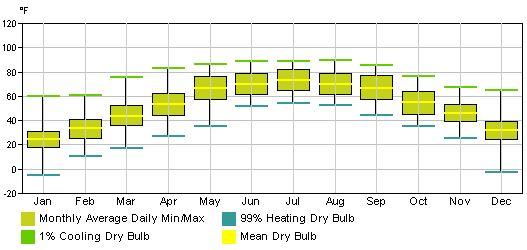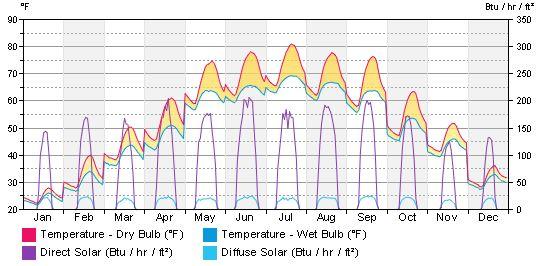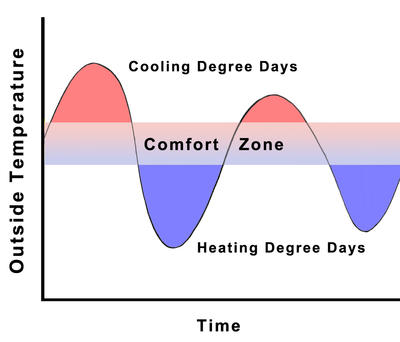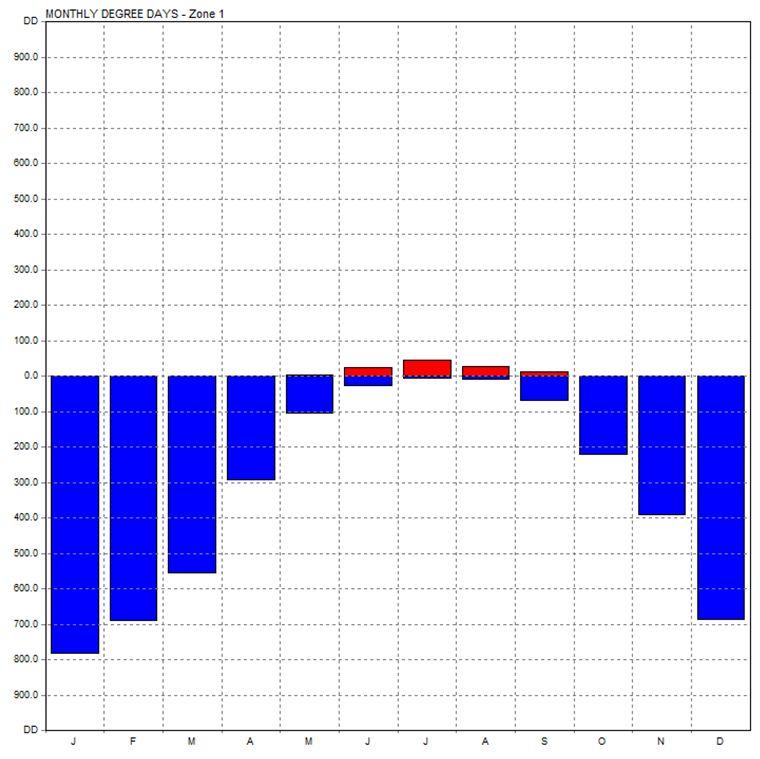You are here
Temperature varies throughout the day and throughout the year and is the most obvious metric to consider for passive heating and cooling design.
Two basic aspects of temperature are dry bulb temperature and wet bulb temperature. From these metrics, you can learn about both the air temperature and the humidity.
  |
|
Temperature data given as a monthly average and as a daily average |
Dry Bulb Temperature
Dry bulb temperature is simply the temperature of the air. It does not consider moisture. It is measured in degrees Celsius, degrees Fahrenheit, or Kelvin and can be measured with a thermometer exposed to the air. It is commonly referred to as the air temperature and is reported in basic weather reports.
Wet Bulb Temperature
Wet bulb temperature is the air temperature that takes into account the cooling potential of evaporation. It is measured by exposing a moistened thermometer bulb to air flow (wrapping a thermometer bulb in wet cloth and swinging it in the air). The evaporation of the moisture depends on the humidity of the air (think about how slowly it takes wet hair to dry on a humid day). Similar to the dry bulb temperature, wet bulb temperature can be measured in degrees Celsius, degrees Fahrenheit, or Kelvin.
Together, dry bulb and wet bulb temperatures can describe humidity.
Degree Days
 |
| Degree days are temperature past a threshold, multiplied by time |
To get a sense for the heating and cooling requirements for your building site, a comfortable temperature range needs to be set. This range, often referred to as the “comfort zone,” can then be compared to the building site’s actual temperatures over time. When the site’s temperature is outside of the comfort zone, it is measured in heating or cooling “degree days.”
For example…
- If the weather is an average of one degree warmer than comfortable for one day, we say the building needs one “degree day" worth of cooling to stay comfortable.
- If the weather is an average of ten degrees warmer for one day, or is one degree warmer for ten days, then the building needs ten cooling degree days.
- If the weather is ten degrees below the comfortable minimum for a day, then the building needs ten heating degree days.
Degree days are not just useful to estimate heating and cooling needs; they also help make comparisons between buildings more fair. A building in a mild climate like San Francisco will need less heating and cooling energy than a building in a cold climate like Moscow, even if the Moscow building is much better built. Comparing the energy intensities of different buildings with the heating and cooling degree days at each site helps make these comparisons more accurate representations of how efficiently the buildings are designed.
 |
|
This graph from Montreal shows that in January there are almost 800 heating degree days to stay comfortable. |
